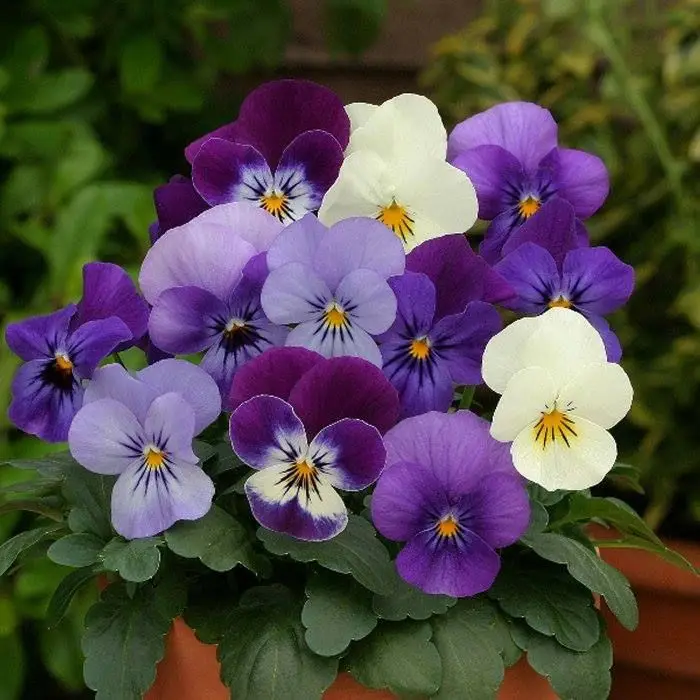Wild violets are very easy to grow and almost do all the work by their selves. Wild Violets are purple blue flowers with heart shaped leaves. Some varieties of violets may also have white or yellow blooms. Most are considered annuals but they often come back each year in unexpected locations.
Violets have a wide array of uses in the garden and as I said are easy to care for. Wild violets can be used as accents around trees, near water sources, and flower beds. They are also a great choice if looking for instant ground cover. Violets can also be grown in containers.
Violets are edible as well. One can consume both the violets leaves and flowers. Not only edible but rich in vitamins as well.
Planting is primarily early spring but violets can also be planted through out the spring and fall. Light shade is preferred but do well in sunny locations as well. Moist, well drained and rich soil is desired as well. They require little care other than a good drink of water after planting and occasional watering through out the season.
2 heaping cups of fresh violet petals (see note below)
2 C boiling wter 1/4 C well-strained, clear lemon juice 4 C sugar 3 oz liquid pectin (Certo)
NOTE: Look for fully opened flowers, not partially opened buds, for better
color and more intense flavor. The violets you want are the wild violets that grow in many parts of the world - there are many varieties, hopefully some are accessible to you. Please choose violets that have NOT been sprayed. ) | |
 See how blue-ish this is? I let it steep (covered) overnight in the fridge. |
Wash petals well, drain and place in heat-proof glass or nonreactive bowl. Pour boiling water over petals and let steep from 30 minutes to 24
hours. It usually takes about two hours for violets. Strain through a fine sieve, reserving the clear, purplish liquid or infusion. If not using immediately, refrigerate up to 24 hours. Place jars and lids on rack in pan or stockpot deep enough to cover them with about two inches of water, bring to a boil, then reduce heat to a simmer, keeping the jars hot until ready to fill. |
 And look how PURPLE it turns when you add the lemon juice! Isn't that cool? |
To make the jelly, stir lemon juice and sugar into reserved infusion in a two-quart nonreactive or stainless steel pan. Bring to a full rolling boil that cannot be stirred down. Add the liquid pectin and continue to boil two minutes, skimming any foam that may rise to the surface.
|
 This recipe made 4 - 8 oz jars and 1 4 oz. jar of jelly for me. Isn't it beautiful?? |
Ladle quickly into jars to within about 1/8 inch from the top; clean each rim and threads of the jar as it's filled, and place flat lid and ring on each before filling the next.Place the jars in a hot-water canning bath and boil for 10 minutes (or the appropriate time for your area). After canning, carefully check to make sure the lids have all sealed.
Sealed jars will last up to one year in a cool, dark place. Put any unsealed jelly in the refrigerator. it should keep about three weeks. Makes four or five half-pint jars. The flavor and color will vary somewhat due to growing conditions and season - that is part of the joy of working with plants, is the endless variety! The taste is delicate, green/floral recipe resource here |




No comments:
Post a Comment
I love comments so if you have a minute leave me your thoughts on the above post